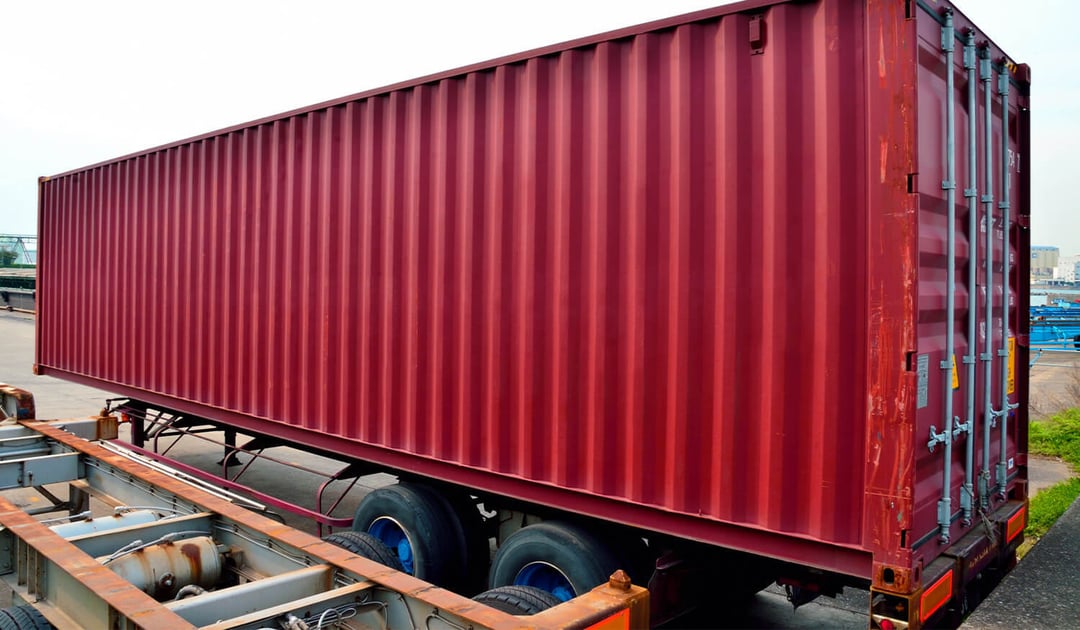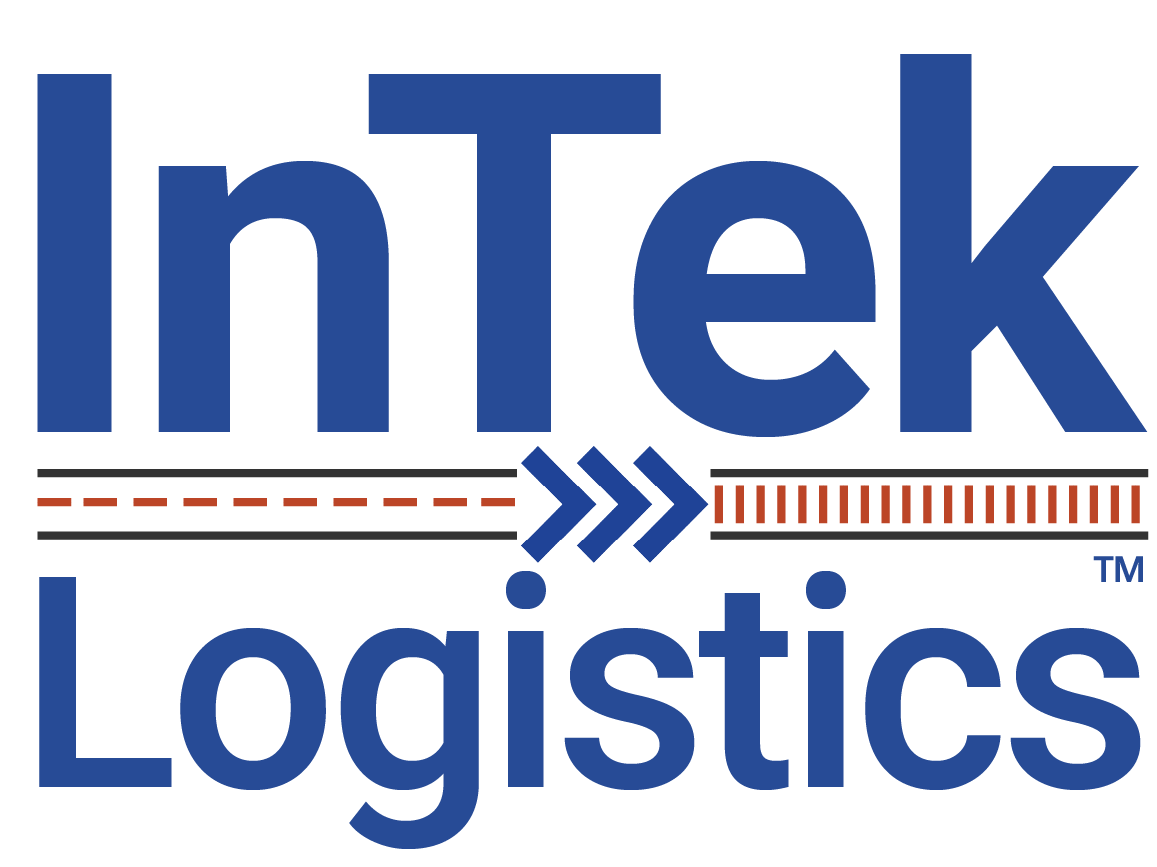
Intermodal transportation has become a cornerstone of modern logistics, offering cost-effective, reliable, and sustainable freight movement across multiple transportation modes, typically rail and truck for domestic intermodal transportation solutions. At the heart of this system is intermodal equipment. From containers to chassis and specialized handling machinery, intermodal equipment makes seamless cargo transitions possible.
What is intermodal equipment?
Intermodal equipment refers to the standardized tools and hardware used to facilitate the movement of cargo containers between different transportation modes without needing to unload the cargo itself. This includes:
- Domestic intermodal containers (e.g., 53')
- ISO intermodal containers (e.g., 20', 40', and 45')
- Container chassis
- Trailers
- Tank containers
- Refrigerated containers (reefers)
- Handling equipment (e.g., reach stackers, straddle carriers, and gantry cranes)
Each piece of equipment is engineered to meet strict ISO standards that ensure interoperability and efficiency across the global supply chain.
Why intermodal equipment matters
Intermodal equipment serves as the physical interface that allows cargo to move effortlessly between trains and trucks. This equipment allows shippers to reap the benefits of intermodal transportation, including:
- Reduced handling costs
- Lower cargo damage risk
- Improved security
- Faster transit times
- Reduced carbon footprint
Proper deployment of well-maintained intermodal equipment directly impacts shipping efficiency, service reliability and operational costs.
Core types of intermodal equipment
While there is a wide variety of equipment used in intermodal freight, there are a few core items that especially stand out as vital to this transportation mode.
1. Intermodal containers
These standardized containers are the most visible element of intermodal shipping. They are typically made of steel or aluminum and built to ISO specifications for uniformity.
- Dry containers – General-purpose for consumer goods
- Refrigerated containers (reefers) – For temperature-sensitive cargo
- Tank containers – Cylindrical tanks for liquid or gas
2. Container chassis
A container chassis is a wheeled platform used to move intermodal containers by truck. Types include:
- Standard chassis – For 20', 40', or 53' containers
- Extendable chassis – Adjustable to different container lengths
- Tank chassis – Designed for ISO tanks
- Gooseneck chassis – Low profile for high-cube containers
Proper chassis selection and maintenance are essential for safety and regulatory compliance.
Learn more about the chassis via The Intermodal Logistics Podcast:
3. Intermodal trailers
While not as modular as containers, intermodal trailers can also be used in intermodal systems, especially in domestic North American shipping. These are often loaded onto flatcars (TOFC – Trailer on Flat Car) for long-distance rail travel.
4. Tank containers (ISO tanks)
Tank containers are cylindrical tanks mounted inside a steel frame and used to transport hazardous or non-hazardous liquids and gases. ISO tanks follow international standards for pressure, volume, and temperature tolerance.
Supporting equipment: The unsung heroes
Beyond the main cargo units, several key pieces of supporting equipment make intermodal systems work:
- Gantry Cranes – Used at ports and rail terminals to lift containers
- Reach Stackers – Mobile equipment for moving containers short distances
- Straddle Carriers – Lift containers while straddling them
- Twist Locks & Corner Castings – Locking mechanisms that secure containers during transport
These tools help maintain the flow of freight and ensure that intermodal terminals operate with minimal delays.
Intermodal equipment regulations and standards
Proper usage of intermodal equipment requires adherence to several regulatory frameworks:
- FMCSA (Federal Motor Carrier Safety Administration) – Governs safe operation of chassis and trailers in the U.S.
- IANA (Intermodal Association of North America) – Provides best practices and administers the UIIA (Uniform Intermodal Interchange Agreement)
- ISO Standards – Govern the dimensions, strength, and compatibility of containers and chassis globally
- OSHA & DOT – Address workplace and transportation safety around intermodal handling
Ensuring compliance minimizes liability and increases reliability in freight operations.
Maintenance and ownership of intermodal equipment
There are a few different types of owners of intermodal equipment, and those owners also have a responsibility to keep it well-maintained to ensure supply chains keep moving.
Who owns the equipment?
Steamship lines often own containers and lease them to shippers. Intermodal equipment providers (IEPs) own and manage chassis fleets. Shippers and 3PLs may lease or own containers for long-term use.
Maintenance best practices
- Scheduled Inspections – IEPs are required to maintain chassis and other equipment in a roadworthy condition.
- Driver Vehicle Inspection Reports (DVIRs) – Required pre- and post-trip inspections by truck drivers.
- Maintenance facilities – On-terminal and mobile repair units keep equipment operational and reduce downtime.
Failing to maintain equipment not only disrupts supply chains but can lead to costly penalties or delays.
Technology trends in intermodal equipment
The industry is evolving rapidly, and intermodal equipment (and its associated technology) is becoming more high-tech:
- Smart containers – Equipped with GPS, temperature, and humidity sensors
- Digital chassis pools – Shared-use models that reduce dwell time and increase availability
- IoT-enabled monitoring – Real-time asset tracking and predictive maintenance
- Automation at terminals – Robotic stacking and automated cranes
These advancements increase visibility, reduce costs and improve planning across the logistics ecosystem.
Choosing the Right Intermodal Equipment Partner
Working with the right intermodal marketing company (IMC) can streamline your operations significantly by aligning your company’s needs through their vast network. Key considerations they use when selecting the best option:
- Fleet availability and size for the markets in which your company needs capacity
- Geographic coverage to offer the flexibility for expansion into additional markets
- Technology integration for seamless and transparent tracking
Top providers also help navigate regulatory complexities, equipment pooling, and container availability.
The essential nature of intermodal equipment
Intermodal equipment is essential to how the modern world moves goods. From the containers that cross oceans to the chassis that haul them down the highway, this specialized equipment reduces costs, boosts reliability, and keeps supply chains flowing smoothly. Understanding intermodal equipment and staying current on the latest advancements is critical for shippers, carriers, and logistics managers alike.
Our team uses the best intermodal equipment options and has connections to ensure its availability anywhere you ship. Work with us, and you'll find flexible solutions that fit you best. For more information about InTek, or logistics and supply chain issues in general, check out our Freight Guides. And for more insights on intermodal logistics, subscribe to the Intermodal Logistics Podcast.
Get Updates
Featured Articles
Categories
- Freight & Shipping Costs (63)
- Freight Broker (69)
- Freight Forwarder (3)
- Intermodal Transportation (216)
- International & Cross Border Logistics (44)
- Logistics & Supply Chain (484)
- Logistics Service Provider (82)
- LTL (39)
- Managed TMS (50)
- News (54)
- Supply Chain Sustainability (12)
- Transportation Management System (38)
- Truckload (124)
- Warehousing & Distribution (59)



